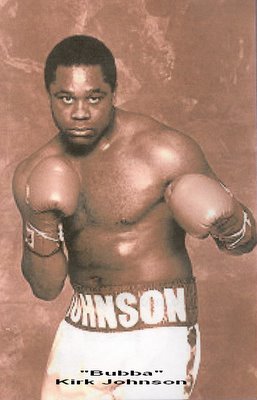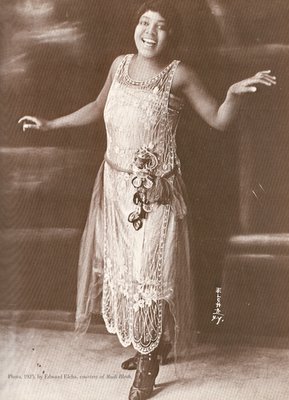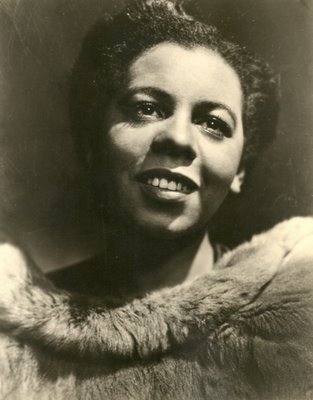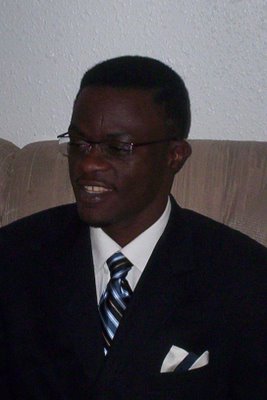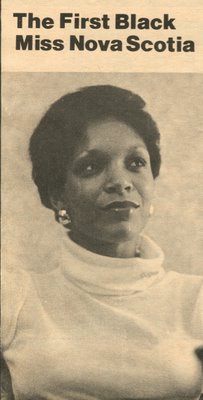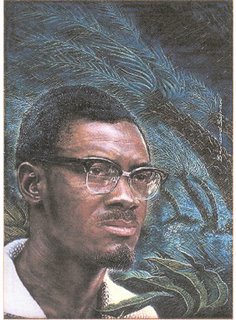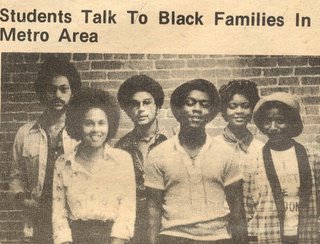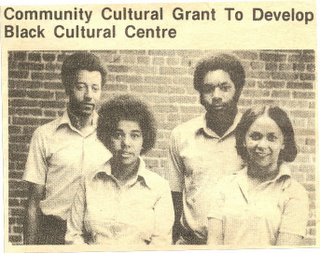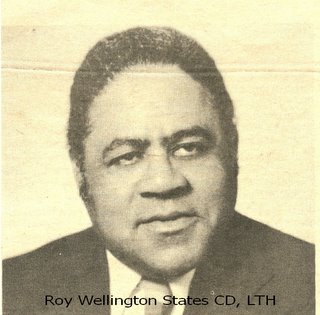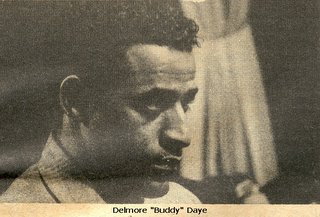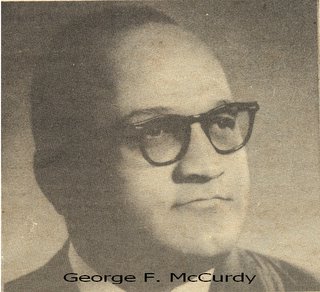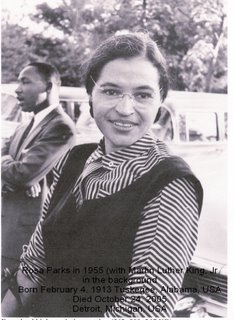
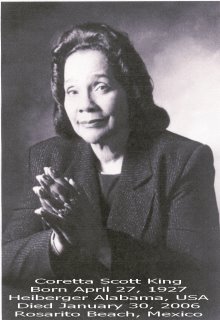

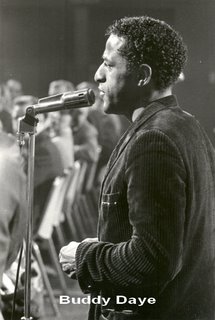


This post represents a departure from the post usually found on this blog. I think the departure may be something that in celebration of Black History month my readers will find of interest.
Like most history lines it is composite of many researchers work. This history line is not uniquely my own work. However the idea of combining African American history lines with African Canadian history lines is not all that common and with this innovation this timeline is different.
This combination allows the researcher to produce unusual insights into our comparative histories. When African American are focused on developing infrastructure, organizations and the leadership to take them to the next level; African Canadians are involved in world conflict, being part of the British Commonwealth during the first and second world wars.
There are delays in the impact of the Civil Rights Movements in Canada when the African Americans in the 1960s were so far ahead. Yet, the individual achievements of African Canadians seem somewhat ahead of African Americans at least in the number, if not in the significance, of the individual honors.
It would seem that in terms of group advance the African Americans accomplishments exceed those of African Canadians in business, politics, sports, and entertainment. How do we account for these differences? Are our relative economies significantly different to explain the broader impact of African American accomplishments on African American socio-economic advances? Are African Canadians so far behind as they seem to be? If so, why?
The African American markers on the timeline are in black; the African Canadian markers are in red. This post became so large that it did not allow the color scheme. Instead I had to make the Canadian dates followed by a "C" for Canada.
I hope you enjoy this information and that you will bring this information to the attention of others who you know that may well be interested and would like to contribute ideas, make comments and generally enjoy what we are doing.
As great as they all were, those photographed above, clearly, all have one thing in common and that is they are no longer with us. So, now, the question is who is going to step up to fill the leadership roles they can not longer play?
BLACK AMERICAN AND CANADIAN HISTORY TIMELINE
1517
Black plantation slavery begins in the New World when Spaniards begin importing slaves from Africa to replace Indians who died from harsh working conditions and exposure to disease.
1604C
An African explorer, Mathieu Da Costa, employed as an interpreter by Samuel De Champlain was the first African settler in New France that became known as Canada.
1619
A Dutch ship with 20 African slaves aboard arrives at the English colony of Jamestown, Virginia.
1628C
Olivier Le Jeune, an 8-year-old boy from Madagascar, arrives in Quebec. He is the first recorded slave purchase in New France. Le Jeune is probably the first person of African origin to live most of his life in Canada.
1642C
Montreal is founded.
1734C
A Montreal slave named Marie-Joseph Angelique learns that she is to be sold to someone else. In an attempt to escape, she sets a fire in her mistress's house. The fire can not be contained, causing damage to half of Montreal. She is caught, tortured and hanged, bringing attention to the conditions of the slaves
1739
The Stono Rebellion, one of the earliest slave insurrections, leads to the deaths of at least 20 whites and more than 40 blacks west of Charleston in the black-majority colony of South Carolina.
1746
Lucy Terry composes the poem "Bars Fight," the earliest extant poem by an African-American. Transmitted orally for more than 100 years, it first appears in print in 1855.
1749C
Halifax is founded by British.
1770
Crispus Attucks, an escaped slave, is killed by British soldiers in the Boston Massacre. He is one of the first men to die in the cause of American independence.
c. 1772
Jean-Baptist-Point Du Sable builds a fur-trading post on the Chicago River at Lake Michigan. Its success leads to the settlement that later becomes the city of Chicago.
1773
Phillis Wheatley, the first notable black woman poet in the United States, is acclaimed in Europe and America following publication in England of her Poems on Various Subjects, Religious and Moral.
1783C
More than 5,000 Blacks leave the United States to live in the Maritimes, Quebec and Ontario. Having sided with the British during the American War of Independence, they come to Canada as United Empire Loyalists, some as free men and some as slaves. Although promised land by the British, they receive only varying amounts of poor-quality land, and, in fact, some receive none at all.
1783C
Annapolis Royal, Nova Scotia, Rose Fortune, a Black woman, becomes Canada's first policewoman.
1784C
United Empire Loyalists arrive in Canada; New Brunswick becomes a separate colony to accommodate them
1790
A mathematician and compiler of almanacs, Benjamin Banneker, was appointed to the District of Columbia Commission by President George Washington, where he worked on the geographical survey of Washington, D.C.
1792C
A large number of the Black Loyalists in New Brunswick and Nova Scotia (1200) migrate to Sierra Leone in West Africa, mainly because the promises of land in Canada were not kept by the British.
1793
Congress passes the first Fugitive Slave Act, making it a crime to harbor an escaped slave or to interfere with his or her arrest.
1796C
About 600 Blacks from Jamaica are deported to Nova Scotia. Known as Maroons, they help rebuild the Halifax Citadel.
1799
Richard Allen becomes the first ordained black minister of the Methodist Episcopal Church.
1800C
The British Government in London and the Jamaican Assembly re-deport the Jamaican maroons from Nova Scotia; they re-settled in Sierra Leone, Africa.1800
Gabriel (Prosser) plans the first major slave rebellion in U.S. history, massing more than 1,000 armed slaves near Richmond, Va. Following the failed revolt, 35 slaves, including Gabriel, are hanged.
1812C
During the War of 1812 a group of Black soldiers, fighting on the same side as White militia and Mohawk Indians, forces American invaders to retreat in the Battle of Queenston Heights.
1812C
Some 2,000 African Americans escape the United States to resettle in Nova Scotia and New Brunswick following the War of 1812.
1816
The African Methodist Episcopal Church is formally organized and consecrates Richard Allen as its first bishop.
1817
The American Colonization Society is established to transport freeborn blacks and emancipated slaves to Africa, leading to foundation of a colony that becomes the Republic of Liberia in 1847.
1818C
The 49th parallel becomes the British North America/U.S. border from Lake of the Woods to Rocky Mountains.
1820
The Missouri Compromise provides for Missouri to be admitted to the Union as a slave state, Maine as a free state, and western territories north of Missouri's southern border to be free soil.
1821
The African Methodist Episcopal Zion Church is organized, developing from a congregation of blacks who left the John Street Methodist Church in New York City because of discrimination.
1822
Freedman Denmark Vesey plans the most extensive slave revolt in U.S. history. The Charleston rebellion is betrayed before the plan can be effected, leading to the hanging of Vesey and 34 others.
1829
Abolitionist David Walker publishes a pamphlet entitled Appeal . . . to the Colored Citizens of the World . . . , calling for a slave revolt. Radical for the time, it is accepted by a small minority of Abolitionists.
1831
William Lloyd Garrison begins publishing the antislavery newspaper The Liberator, advocating emancipation for black Americans held in bondage.
1831
Nat Turner leads the only effective, sustained slave rebellion in U.S. history, attracting up to 75 fellow slaves and killing 60 whites. After the defeat of the insurrection, Turner is hanged on November 11.
1832C
The African Baptist church at Halifax is organized on Cornwallis Street under the leadership of Richard Preston, a former Black American slave.
1833
The American Anti-Slavery Society, the main activist arm of the Abolitionist movement, is founded under the leadership of William Lloyd Garrison.
1834C
At midnight July 31, slavery comes to an end in all British territories, including British North America. To honor this important event, August 1 is celebrated as Emancipation Day in Windsor, Ontario, and elsewhere.
1836C
The Education Act allowed the Commissioners of Education of a municipality to use the meager allowance set aside for poor school districts as the entire budget from public accounts for the segregated schools that black student were forced to attend by being uprooted from the city public commons schools. Black children walked for to attended the segregated schools set aside for them.
1837C
Black militia units participate in putting down the rebellion in Upper Canada.
1839
Slaves revolt on the Spanish slave ship Amistad in the Caribbean. After their arrest in Long Island Sound, former U.S. president John Quincy Adams successfully defends the rebels before the Supreme Court.
1840
The Liberty Party holds its first national convention in Albany, N.Y. In opposition to fellow Abolitionist William Lloyd Garrison, members believe in political action to further antislavery goals.
1841C
The Dawn Settlement in what is now Dresden, Ontario, is established to provide self-help for Blacks in agricultural communities.
1843
In a speech at the national convention of free people of colour, Henry Highland Garnet, Abolitionist and clergyman, calls upon slaves to murder their masters.
1847
Joseph Jenkins Roberts, the son of free blacks in Virginia, is elected the first president of Liberia. In 1849 he secures British recognition of Liberia as a sovereign nation.
1847
Frederick Douglass begins publication of the North Star, an antislavery newspaper, contributing to his break with white Abolitionist leader William Lloyd Garrison, publisher of The Liberator.
1848
The Free Soil Party, a minor but influential political party opposed to the extension of slavery into the western territories, nominates former U.S. president Martin Van Buren to head its ticket.
1848C
The first legal deeds creating the community of Africville are issued by the Nova Scotia government.
1848C
The African Abolition Society that was founded and established by Rev. Richard Preston had as its President Charles Roan.
1850
Speaking on behalf of the Abolitionist movement, Sojourner Truth travels throughout the Midwest, developing a reputation for personal magnetism and drawing large crowds.
1850
Harriet Tubman returns to Maryland to guide members of her family to freedom via the Underground Railroad. Later helping more than 300 slaves to escape, she comes to be known as the "Moses of her people."
1850
Congress passes a series of compromise measures affecting California, Utah, New Mexico, Texas, and the District of Columbia in an effort to maintain an even balance between free and slave states.
1850C
More than 30,000 American Blacks escape slavery in the United States and come to Canada. In the United States, the Fugitive Slave Act is passed in 1850. It provides that even free persons can be made a slave if suspected of being a runaway. As a result, more fugitive slaves and free Black persons come to Canada.
1850C
From her home in St. Catherine’s, Ontario, Harriet Tubman makes 19 trips into the United States to help slaves escape to Canada.
1850C
Ontario passed the Common Schools Act, providing for separate schools for Blacks and Roman Catholics. This law gives rise to the creation of separate schools for Blacks, leading in some cases, to Whites refusing to have their children attend schools with Blacks. In Hamilton, Ontario, there are riots as some parents try to prevent Blacks from attending schools with White children.
1853
Episcopalian minister Alexander Crummell becomes a missionary and teacher in Liberia, advocating a program of religious conversion and economic and social development.
1853
William Wells Brown--a former slave, Abolitionist, historian, and physician--publishes Clotel, the first novel by a black American.
1853C
Mary Ann Shadd becomes the first woman in North America to become an editor of a newspaper. Working out of Chatham, Ontario, she publishes, edits and writes in the Provincial Freeman, a newspaper serving the Black community in Ontario.
1854
Author Frances E.W. Harper's most popular verse collection, Poems on Miscellaneous Subjects, is published, containing the antislavery poem "Bury Me in a Free Land."
1854C
The African Baptist Association of Nova Scotia is established.
1855
John Mercer Langston, a former slave, is elected clerk of Brownhelm Township in Ohio. He is the first black to win an elective political office in the United States.
1856
Members of the Methodist Episcopal Church found Wilberforce University. After the university is closed during the Civil War, it is bought and reopened by the African Methodist Episcopal Church.
1856C
Formation of the British Methodist Episcopal Church (BME)is established and it is an all Black church.
1856
In the ongoing contest between pro- and antislavery forces in Kansas, a mob sacks the town of Lawrence, a "hotbed of abolitionism," leading to retaliation by John Brown at Pottawatomie Creek.
1857
In its Dred Scott decision, the U.S. Supreme Court legalizes slavery in all the territories, exacerbating the sectional controversy and pushing the nation toward civil war.
1857C
William Hall, born in Hants County, Nova Scotia, becomes the first Nova Scotian and the first Black to win the Victoria Cross for Bravery in the war. The Victoria Cross is the highest military honor in the British Commonwealth.
1858C
About 600 Blacks from California move to Victoria British Columbia. One of them, Mifflin Gibbs, later plays a key role in persuading British Columbia to become part of Canada.
1859
Harriet E. Wilson writes Our Nig, a largely autobiographical novel about racism in the North before the Civil War.
1859C
Saint John, New Brunswick’s Saint Philips A.M.E was organized on the corner of Queen and Pitt Streets in that city.
1859
The U.S. Supreme Court, in Ableman v. Booth, overrules an act by a Wisconsin state court that declared the Fugitive Slave Act of 1850 unconstitutional.
1859C
Abraham Shadd is elected to the town council in Raleigh, Ontario and becomes the first Black elected to public office.
c. 1859
Martin R. Delany, physician and advocate of black nationalism, leads a party to West Africa to investigate the Niger Delta as a site for settlement of African-Americans.
1859C
William Hall is presented with the Victoria Cross.
1860C
The all-Black Victoria Pioneer Rifle Company is formed to defend British Columbia.
1861
The Civil War begins in Charleston, S.C., as the Confederates open fire on Fort Sumter.
1861C
Dr. Anderson Fuffin Abbott becomes the first Canadian Born Black to graduate from medical school.
c. 1861
Pinckney Pinchback runs the Confederate blockade on the Mississippi to reach New Orleans. There he recruits a company of black volunteers for the Union, the Corps d'Afrique.
1862C
Saint John, New Brunswick’s Cornelius Sparrow opens his Royal Saloon at 18 Charlotte Street in the heart of the city’s business district and there was a Hair Dressing Salon for women of Saint John’s growing community.
1862
Future U.S. congressman Robert Smalls and 12 other slaves seize control of a Confederate armed frigate in Charleston harbour. They turn it over to a Union naval squadron blockading the city.
1862
The second Confiscation Act is passed, stating that slaves of civilian and military Confederate officials "shall be forever free," enforceable only in areas of the South occupied by the Union Army.
1863
President Abraham Lincoln signs the Emancipation Proclamation on January 1.
1864
Southern outrage at the North's use of black soldiers flares up in Confederate forces capturing Fort Pillow, Tenn., and massacring the black troops within; some are burned or buried alive.
1864
President Lincoln refuses to sign the Wade-Davis bill, which requires greater assurances of loyalty to the Union from white citizens and reconstructed governments.
1865
The Civil War ends on April 26, after the surrender of the Confederate generals Robert E. Lee and J.E. Johnston.
1865
Congress establishes the U.S. Bureau of Refugees, Freedmen, and Abandoned Lands to aid four million black Americans in transition from slavery to freedom.
c. 1866
The states of the former Confederacy pass "black code" laws to replace the social controls removed by the Emancipation Proclamation and the Thirteenth Amendment.
1866
The U.S. Army forms black cavalry and infantry regiments. Serving in the West from 1867 to 1896 and fighting Indians on the frontier, they are nicknamed "buffalo soldiers" by the Indians.
1866
With the complicity of local civilian authorities and police, rioting whites kill 35 black citizens of New Orleans and wound more than 100, leading to increased support for vigorous Reconstruction policies.
1867
A predominantly black university, Howard University, is founded in Washington, D.C. It is named for General Oliver Otis Howard, head of the post-Civil War Freedmen's Bureau.
1867C
Confederation of Nova Scotia, New Brunswick, Quebec and Ontario forms the Dominion of Canada.
1869C
William H. Golar, a university educated Black Nova Scotia, became a professor of Ancient languages and also taught at Livingstone College, Salisbury, North Carolina; he wrote the poem “The Great Baptizing”.
1870
The Colored Methodist Episcopal Church is organized, four years after the first efforts among black members of the Methodist Episcopal Church, South, to develop an independent church.
1870
Joseph Hayne Rainey is the first black elected to the U.S. House of Representatives. This congressman from South Carolina will enjoy the longest tenure of any black during Reconstruction.
1870
Hiram R. Revels of Mississippi takes the former seat of Jefferson Davis in the U.S. Senate, becoming the only black in the U.S. Congress and the first elected to the Senate.
1872
John R. Lynch, speaker of the Mississippi House of Representatives, is elected to the U.S. Congress.
1877
Reconstruction ends as the last Federal troops are withdrawn. Southern conservatives regain control of their state governments through fraud, violence, and intimidation.
1879
Author Joel Chandler Harris' "Tar-Baby," an animal tale told by the Uncle Remus character, popularizes the sticky tar doll figure of black American folktales.
1881
Tuskegee Normal and Industrial Institute in Alabama is founded on July 4 with Booker T. Washington as the school's first president.
1883
Inventor Jan Ernst Matzeliger patents his shoe-lasting machine that shapes the upper portions of shoes. His invention wins swift acceptance and soon supplants hand methods of production.
1883C
The Education Committee of the colored citizens of Halifax, Nova Scotia Canada petitioned the legislature in the Spring of 1883 on behalf of black students but no adjustments were made to the segregated school regime until the 1960s.
1883C
The first Black to attend university in the province of New Brunswick was Arthur Richardson. He began in 1883 at the University of New Brunswick (UNB) and graduated in 1886 with Honors in Classics. Not until 1905 would a black woman from New Brunswick graduate from a New Brunswick university and both graduates would have to find employment outside the province of New Brunswick due to race discrimination.
1887
Florida A&M University is founded as the State Normal (teacher-training) School for Colored Students.
1887
Journalist T. Thomas Fortune begins editing the New York Age. His well-known editorials defend the civil rights of blacks and condemn racial discrimination.
1890C
George Dixon wins the World Bantamweight boxing title, becoming the first Black man to win a world boxing title.
1892
The offices of the Memphis Free Speech are destroyed following editorials of part-owner Ida B. Wells denouncing the lynching of three of her friends.
c. 1895
Cornetist Buddy Bolden, semi-legendary founding father of jazz, leads a band in New Orleans.
1895
A merger of three major black Baptist conventions leads to the formation of the National Baptist Convention, U.S.A., Inc., in Atlanta, Ga.
1895
At the Atlanta Exposition, educator Booker T. Washington delivers his "Atlanta Compromise" speech, stressing the importance of vocational education for blacks over social equality or political office.
1896
Believing African-Americans to be the descendants of the "lost tribes of Israel," Prophet William S. Crowdy founds the Church of God and Saints of Christ.
1896
Mary Church Terrell becomes the first president of the National Association of Colored Women, working for educational and social reform and an end to racial discrimination.
1896
Paul Laurence Dunbar, acclaimed as "the poet laureate of the Negro race," publishes Lyrics of Lowly Life, containing some of the finest verses of his Oak and Ivy and Majors and Minors.
1890C
James Robinson Johnson graduates from Dalhousie College School of Law and becomes the first Black Nova Scotian to graduate with a Law degree from Dalhousie.
1899
Composer and pianist Scott Joplin publishes "The Maple Leaf Rag," one of the most important and popular compositions during the era of ragtime, precursor to jazz.
c. 1900
Originally a slaves' parody of white ballroom dances, the cakewalk becomes a wildly popular dance among fashionable whites as well as white minstrels working in blackface.
1901
Booker T. Washington dines with President Theodore Roosevelt at the White House. The dinner meeting is bitterly criticized by many whites, who view it as a marked departure from racial etiquette.
1903
W.E.B. Du Bois publishes The Souls of Black Folk, which declares that "the problem of the Twentieth Century is the problem of the color-line," and discusses the dual identity of black Americans.
1903
In protest to the ideology of Booker T. Washington, W.E.B. Du Bois suggests the concept of the "Talented Tenth"--a college-trained leadership cadre responsible for elevating blacks economically and culturally.
1904
Perhaps the greatest fighter in the history of the lightweight division, Joe Gans, loses to welterweight champion Jersey Joe Walcott in a 20-round draw.
1905
The Niagara Movement is founded as a group of black intellectuals from across the nation meet near Niagara Falls, Ont., adopting resolutions demanding full equality in American life.
1905
Madame C.J. Walker develops and markets a method for straightening curly hair, on her way to becoming the first black female millionaire in the United States.
1905C
The first Black woman to attend university in New Brunswick was Mary Matilda Winslow. She entered UNB in 1901 and graduated with Honors in 1905.
1906
President Theodore Roosevelt orders 167 black infantrymen dishonorably discharged because of their conspiracy of silence regarding the shooting death of a white citizen in Brownsville, Texas.
1906
After educator John Hope becomes its president, Atlanta Baptist College expands its curriculum and is renamed Morehouse College.
1907
Black Primitive Baptist congregations formed by emancipated slaves after the Civil War organize the National Primitive Baptist Convention, Inc.
1908
In Springfield, Ill., the home town of Abraham Lincoln, the black community is assaulted by several thousand white citizens and two elderly blacks are lynched.
1909
A group of whites shocked by the Springfield riot of 1908 merge with W.E.B. DuBois’s Niagara Movement, forming the National Association for the Advancement of Colored People (NAACP).
1909C
Black Oklahoma farmers become Canadians. They begin establishing communities in Canada’s western provinces -- Alberta, Saskatchewan and Manitoba.
1910
The Crisis, a monthly magazine published by the NAACP, is founded. W.E.B. Du Bois edits the magazine for its first 24 years.
1911
The National League on Urban Conditions Among Negroes (National Urban League) is formed in New York City with the mission to help migrating blacks find jobs and housing and adjust to urban life.
1913
Known as Prophet Noble Drew Ali, Timothy Drew founds the Moorish Science Temple of America in Newark, N.J. His central teaching is that blacks are of Muslim origin.
1914
George Washington Carver of the Tuskegee Institute reveals his experiments concerning peanuts and sweet potatoes, popularizing alternative crops and aiding the renewal of depleted land in the South.
1914
The Universal Negro Improvement Association is founded by Marcus Garvey in his homeland of Jamaica to further racial pride and economic self-sufficiency and to establish a black nation in Africa.
1914C
Black Canadians join combat units and a construction battalion is formed as a segregated unit in the First World War. They serve with great loyalty, even though the Government of Canada tries to keep Blacks out of the Armed Forces, and even though Black soldiers are abused, and sometimes physically attacked just because of their skin color.
1915
Historian Carter G. Woodson founds the Association for the Study of Negro Life and History in an attempt to assist the accurate and proper study of African-American history.
1915
The first black heavyweight champion of the world, Jack Johnson, loses the title to the "Great White Hope,” Jess Willard in 26 rounds in Havana. Rumors claim he lost to avoid legal difficulties.
1915
A schism in the National Baptist Convention yields the National Baptist Convention of America, the largest black church in the United States.
1917
Racial antagonism toward blacks newly employed in war industries leads to riots that kill 40 blacks and 8 whites in East Saint Louis, Ill.
1918
James Van Der Zee and his wife open the Guarantee Photo Studio in Harlem. The portraits he shoots later become a treasured chronicle of the Harlem Renaissance.
1919
During the "Red Summer" following World War I, 13 days of racial violence on the South Side of Chicago leave 23 blacks and 15 whites dead, 537 people injured, and 1,000 black families homeless.
1919
A'Lelia Walker inherits the family business and estate upon the death of her mother, Madame C.J. Walker. In the 1920s she entertains the leading writers and artists of the Harlem Renaissance.
1920
Marcus Garvey, leader of the Universal Negro Improvement Association, addresses 25,000 blacks at Madison Square Garden and presides over a parade of 50,000 through the streets of Harlem.
1920C
The Ladies Auxiliary for the Nova Scotia Home for Colored Children call Canada’s First Convention of Colored Women in Halifax on May 27, 1920.
1921
Oscar Charleston, perhaps the best all-around baseball player in the history of the Negro leagues, leads his league in doubles, triples, and home runs, batting .434 for the year.
1921C
The Saint John, New Brunswick Royal Baseball Club, become Intermediate Champions.
1922
Louis Armstrong leaves New Orleans, arriving in Chicago to play second trumpet in cornetist King Oliver's Creole Jazz Band. Armstrong's work in the 1920s would revolutionize jazz.
1922
Aviator Bessie Coleman, who later refuses to perform before segregated audiences in the South, stages the first public flight by an African-American woman.
1923
Charles Clinton Spaulding becomes president of the North Carolina Mutual Life Insurance Company. He builds it into the nation's largest black-owned business by the time of his death in 1952.
1923
Pianist and orchestrator Fletcher Henderson becomes a bandleader. His prestigious band advances the careers of such black musicians as Louis Armstrong, Coleman Hawkins, and Roy Eldridge.
1923
Poet and novelist Jean Toomer publishes his masterpiece, Cane, an experimental novel often considered one of the greatest achievements of the Harlem Renaissance.
1923
Blues singer Bessie Smith, discovered by pianist-composer Clarence Williams, makes her first recording. She will eventually become known as "Empress of the Blues."
1924
Spelman Seminary, which began awarding college degrees in 1901, becomes Spelman College. The school began in 1881 with two Boston women teaching 11 black women in an Atlanta church basement.
1925
The New Negro, an anthology of fiction, poetry, drama, and essays associated with the Harlem Renaissance, is edited by Alain Locke.
1925
In an era when Ku Klux Klan membership exceeds 4,000,000 nationally, a parade of 50,000 unmasked members takes place in Washington, D.C.
1925
Countee Cullen, one of the finest poets of the Harlem Renaissance, publishes his first collection of poems, Color, to critical acclaim before graduating from New York University.
1925
Singer and dancer Josephine Baker goes to Paris to dance at the Théâtre des Champs-Élysées in La Revue nègre, becoming one of the most popular entertainers in France.
1925
A. Philip Randolph, trade unionist and civil-rights leader, founds the Brotherhood of Sleeping Car Porters, which becomes the first successful black trade union.
1925
At a historic literary awards banquet during the Harlem Renaissance, Langston Hughes earns first place in poetry with The Weary Blues, which is read aloud by James Weldon Johnson.
1926
The literary journal Fire!!, edited by young writer Wallace Thurman, publishes its first and only issue. The short-lived publication remains highly influential among the participants of the Harlem Renaissance.
c. 1926
Pianist, composer, and self-proclaimed inventor of jazz Jelly Roll Morton records several of his masterpieces, including "Black Bottom Stomp" and "Dead Man Blues."
1927
James Weldon Johnson, poet and anthologist of black culture, publishes God's Trombones, a group of black dialect sermons in verse accompanied by the illustrations of Aaron Douglas.
1927
Poet and playwright Angelina Weld Grimké publishes Caroling Dusk, an anthology of her poetry edited by Countee Cullen.
1927
Painter Henry Ossawa Tanner, whose works include "The Raising of Lazarus," becomes the first black American to be granted full membership in the National Academy of Design.
1928C
Supreme Court of Canada rules that women are not "persons" who can be elected to public office
1928
Poet and novelist Claude McKay publishes Home to Harlem, the first fictional work by an African-American to reach the best-seller lists.
1928C
Madeline Symonds graduates from the Provincial Normal college, now the Nova Scotia Teachers College and becomes the first Black woman to accomplish graduation from the college.
1929
John Hope, noted advocate of advanced liberal arts instruction for blacks, is chosen as president of Atlanta University, the first graduate school for African-Americans.
1930
Benjamin Oliver Davis, Sr., becomes the first black colonel in the U.S. Army. He later oversees race relations and the morale of black soldiers in World War II and becomes the first black general in 1940.
1930’sC
The first Black graduate of Saint John, New Brunswick’s High School was Miss Melvina Henderson in the 1930’s. Her matriculation marks were so high she was accused of cheating. She was made to rewrite all exams under close supervision. The second exams were just as exceptional as were the first. Miss Henderson's marks remained. She won a scholarship to Teacher's College and continued her academic excellence.
1931
Nine black youths accused of raping two white women on a freight train go on trial for their lives in Scottsboro, Ala. The case becomes a cause célèbre among Northern liberal and radical groups.
1931
Walter White begins his tenure as executive secretary of the NAACP, his principal objective being the abolition of lynching. By the time of his death in 1955, lynching would become a rarity.
1932
In Tuskegee, Ala., the U.S. Public Health Service begins examining the course of untreated syphilis in black men, not telling them of their syphilis or their participation in the 40-year study.
1932
Wallace Thurman, young literary rebel of the Harlem Renaissance, publishes his satiric novel Infants of the Spring.
1934
Wallace D. Fard, founder of the Nation of Islam movement, disappears, leading to the rise of Elijah Muhammad.
1936
Track-and-field athlete Jesse Owens wins four gold medals in the 1936 Olympic Games in Berlin. His victories derail Adolf Hitler's intended use of the games as a show of Aryan supremacy.
c. 1936
Delta blues musician Robert Johnson makes his legendary and influential recordings in Texas, including "Me and the Devil Blues," "Hellhound on My Trail," and "Love in Vain."
1937
Writer and folklorist Zora Neale Hurston publishes her second novel, Their Eyes Were Watching God, which receives considerable acclaim and criticism within the black community.
1938
In a knockout in the first round of their rematch, heavyweight champion Joe Louis wreaks vengeance on Max Schmeling of Germany, the only boxer to have knocked out Louis in his prime.
c. 1938
Assisted by saxophonist Lester Young, her romantic companion during these years, jazz vocalist Billie Holiday makes several of her finest recordings.
c. 1939
Count Basie leads his legendary Kansas City band. Among the band members are: saxophonist Lester Young, trumpeter Buck Clayton, guitarist Freddie Green, bassist Walter Page, and drummer Jo Jones.
1939
Singer Marian Anderson performs at the Lincoln Memorial before an audience of 75,000 after the Daughters of the American Revolution refused to allow her to sing at Constitution Hall.
1939-45C
In the Second World War, authorities again try to keep Blacks out of the armed forces, but Blacks insist on serving their country. Eventually, they join all services of the war, often serving with distinction.
1939
The NAACP Legal Defense and Education Fund is organized. Charles Hamilton Houston spearheads the effort to consolidate some of the nation's best legal talents in the fight against legally sanctioned bias.
1940
Author Richard Wright publishes his masterpiece, Native Son. The stark, tragic realism of this novel immediately places Wright in the front ranks of contemporary American writers.
c. 1940
Painter Jacob Lawrence begins work on his 60-panel "Migration" series, which depicts the journey of African-Americans from the South to the urban North.
c. 1940
Duke Ellington leads his greatest band. Among the band members are: bassist Jimmy Blanton, saxophonist Ben Webster, trumpeter Cootie Williams, and composer-arranger Billy Strayhorn.
1941
Bayard Rustin, chief organizer of the 1963 March on Washington, organizes the New York branch of the Congress on Racial Equality.
1941
Following considerable protest, the War Department forms the all-black 99th Pursuit Squadron of the U.S. Army Air Corps, later known as the Tuskegee Airmen, commanded by Benjamin Oliver Davis, Jr.
1942
Charles Richard Drew, developer and director of blood plasma programs during World War II, resigns as the armed forces begin to accept the blood of blacks but resolve to racially segregate the supply.
1942
The interracial Congress of Racial Equality (CORE) is founded in New York City. Its direct-action tactics achieve national prominence during the Freedom Rides of 1961.
c. 1942
Bebop is born out of the musical experiments of jazz musicians in Harlem, including saxophonist Charlie Parker, trumpeter Dizzy Gillespie, and pianist Thelonious Monk.
1942C
Cherry Brook’s Miss Daisy Bundy wins the Miss Black Nova Scotia Beauty Pageant.
1943
Dancer Bill "Bojangles" Robinson appears with singer Lena Horne in the wartime all-black musical film Stormy Weather.
1945
Ebony magazine is founded by John H. Johnson of Chicago. Modeled after Life but intended for the black middle class, the magazine is an instant success.
1945
Adam Clayton Powell, Jr., pastor of the Abyssinian Baptist Church in Harlem, is elected to the U.S. House of Representatives as a Democrat from Harlem, serving 11 successive terms.
c. 1946
Saxophonist Charlie Parker, though plagued by drug abuse, produces many of the finest recordings of his career, including "Now's the Time," "KoKo," "Yardbird Suite," and "Ornithology."
1946C
Carrie Best, of New Glasgow, Nova Scotia, starts publishing a newspaper called The Clarion. Later its name changes to The Negro Citizen. It continues publication for 10 years. As a publisher and writer, Carrie Best shows that Blacks are often not treated fairly in Nova Scotia. She shows how they are not served on restaurants, and kept out of theatres. Best helps to get rid of those practices, making Nova Scotia - and Canada - a better place to live.
1947
Jackie Robinson joins the Brooklyn Dodgers, becoming the first black baseball player in the major leagues.
1947
Historian John Hope Franklin gains international attention with the publication of From Slavery to Freedom, an enduring survey of African-American history.
1948
Satchel Paige, legendary baseball pitcher of the Negro leagues, finally enters the majors after the "gentlemen's agreement" prohibiting the signing of black players is relaxed.
1949
Not satisfied with Billboard magazine's label of "race records" for its black music chart, Jerry Wexler, a white reporter at the magazine, introduces the designation "rhythm and blues."
1949C
Rev. W.P. Oliver reads a paper titled “Cultural Progress of the Negro in Nova Scotia” before the Canadian Humanities Council, Maritime Regional Conference, held at Dalhousie University in June 1949
1950
Ralph Bunche is awarded the Nobel Peace Prize for his work as United Nations mediator in the Arab-Israeli dispute in Palestine.
1950
Gwendolyn Brooks is awarded the Pulitzer Prize for poetry for Annie Allen (1949), becoming the first African-American writer to win the award.
1950
After refusing to disavow his membership in the Communist Party, Paul Robeson--singer, actor, and activist--has his passport withdrawn by the U.S. State Department.
1952
Ralph Ellison publishes his masterpiece, Invisible Man, which receives the National Book Award in 1953.
1952C
Weymouth Falls’ Sam Langford is inducted into the World Boxing Hall of fame, as its greatest Champion.
1954
On May 17 the U.S. Supreme Court rules unanimously in Brown v. Board of Education of Topeka that racial segregation in public schools violates the Fourteenth Amendment to the Constitution.
1954
In the World Series against the Cleveland Indians, New York Giants outfielder Willie Mays makes "the catch." The extraordinary over-the-shoulder catch remains one of the most talked-about plays in baseball history.
1954C
Segregation ends in Nova Scotia schools with the advent of changes to the law that permitted Segregation. The schools in Nova Scotia remained segregated until 19641955
Lynching continues in the South with the brutal slaying of a 14-year-old Chicago youth, Emmett Till, in Money, Miss. Jet magazine publishes a picture of the mutilated corpse.
1955
Rosa Parks, secretary of the Montgomery, Ala., chapter of the NAACP, refuses to surrender her seat when ordered by a local bus driver, leading to the Montgomery bus boycott of 1955-56.
1955C
The Canadian Pacific railway finally starts to let some Blacks work as railway conductors. Before that time, many Blacks worked on the railway, primarily as porters, but none were allowed to be conductors.
1955
In her title role of NBC’s Tosca, opera diva Leontyne Price is triumphant, making her the first black person to sing opera on television.
1955
Singer and guitarist Chuck Berry travels from St. Louis to Chicago, recording "Maybellene," an immediate sensation among teenagers. The hit helps shape the evolution of rock and roll.
1956
Clifford Brown, the most influential trumpeter of his generation, dies at the age of 25 in a car accident. Noted for his lyricism and grace of technique, Brown is a principal figure in the hard-bop idiom.
1956
Arthur Mitchell, future director of the Dance Theatre of Harlem, becomes the only black dancer in the New York City Ballet. George Balanchine creates several roles especially for him.
1956
Tennis player Althea Gibson becomes the first African-American to win a major title--the Wimbledon doubles--as well as the French singles and doubles and Italian singles.
1957
The Southern Christian Leadership Conference is established by the Reverend Martin Luther King, Jr., and others to coordinate and assist local organizations working for the full equality of African-Americans.
1957
President Dwight D. Eisenhower orders federal troops into Little Rock, Ark., after unsuccessfully trying to persuade Governor Orval Faubus to give up efforts to block desegregation at Central High.
1957
Fullback Jim Brown begins his professional football career with the Cleveland Browns. He leads the National Football League in rushing for eight of his nine seasons.
1958
Boxer Sugar Ray Robinson, considered by many to be the greatest fighter in history, wins back the middleweight title for the last time by defeating Carmen Basilio in a savage fight.
1958
The Alvin Ailey American Dance Theater is formed. Composed primarily of African-Americans, the dance company tours extensively both in the United States and abroad.
1958
Mahalia Jackson, known as the "Queen of Gospel Song," joins Duke Ellington in his gospel interlude Black, Brown, and Beige at the 1958 Newport Jazz Festival.
1958C
Fredericton, New Brunswick native Willie O’Ree becomes the first Black hockey player to play in the NHL (National Hockey League) with the Boston Bruins.
1959
Singer Ray Charles records "What'd I Say," which becomes his first million-seller, and exemplifies the emergence of soul music, combining rhythm and blues with gospel.
1959
Trumpeter Miles Davis records Kind of Blue, often considered his masterwork, with composer-arranger-pianist Bill Evans and tenor saxophonist John Coltrane.
1959
Raisin in the Sun, by Lorraine Hansberry, becomes the first drama by a black woman to be produced on Broadway. The 1961 film version features Sidney Poitier and receives a special award at Cannes.
1959
In Detroit, Michigan, Berry Gordie finances a recording company; he calls it: Motown Records. The "Motown sound" dominates black popular music through the 1960s and attracts a significant white audience as well.
1959
Baseball player Ernie Banks, regarded as one of the finest power hitters in the history of the game, is named the National League's Most Valuable Player for a second consecutive season.
1959C
In Halifax, Nova Scotia, Canada, Muriel Boyd States went to work at the National Harbors Board as a Stenographer by 1970 she appointed Secretary to the Port Engineer. In 1973 she was transferred to the Port manager’s office as Secretary and he title changed to Executive Secretary and after 43-years of employment Muriel retired from that job. Well done
1959
Pioneer free jazz musician Ornette Coleman and his quartet play for the first time at New York's Five Spot Café. The historic performance yields a highly polarized reaction from the audience.
1960
Jim Stewart and Estelle Axton found Stax Records of Memphis, Tenn., which comes to define the Southern soul music sound, including such artists as Sam and Dave, Booker T. and the MGs, and Otis Redding.
1960
The sit-in movement is launched at Greensboro, N.C., when black college students insist on service at a local segregated lunch counter.
1960
Inspired by the sit-in movement, jazz drummer Max Roach composes and records the historic "Freedom Now Suite" with lyricist Oscar Brown, Jr., and his wife, vocalist Abbey Lincoln.
1960s C
Large numbers of people from the Caribbean start settling in Canada.
1961
Testing desegregation practices in the South, the Freedom Rides, sponsored by CORE, encounter overwhelming violence, particularly in Alabama, leading to federal intervention.
1961C
Nova Scotia’s Frank Boyd, at Camp Aldershot, Nova Scotia, wins an award of merit: the Most Outstanding Army Cadet in Nova Scotia.
1961
Whitney Young is appointed executive director of the National Urban League. He builds a reputation for his behind-the-scenes work to bridge the gap between white political and business leaders and poor blacks.
1962
Basketball player Wilt Chamberlain becomes the first player to score more than 4,000 points in regular-season National Basketball Association games.
1962C
The demolition of Africville is approved by the City of Halifax.
1962
The New Yorker magazine publishes a long article by author James Baldwin on aspects of the civil-rights struggle. The article becomes a best-seller in book form as The Fire Next Time.
1962C
Daniel G. Hill, an American born Black who moved to Canada in 1950, is made the first director of the Ontario Human Rights Commission, the first government agency in Canada set up to protect citizens from discrimination. Hill later becomes chairman of the Commission. Later still, he serves as the Ombudsman of Ontario. He also writes three books, including The Freedom Seekers: Blacks in Early Canada.
1962C
The Canadian immigration policy changes, emphasizing that education and skills of the applicant are to be the main criteria for entry into Canada. This leads to the "Points System" in 1967, which is considered more equitable for Blacks.
1963
Medgar Evers, Mississippi field secretary for the NAACP, is shot and killed in an ambush in front of his home, following a historic broadcast on the subject of civil rights by President John F. Kennedy.
1963
In Birmingham, Ala., Police Commissioner Eugene "Bull" Connor uses water hoses and dogs against civil-rights protesters, many of whom are children, increasing pressure on President John F. Kennedy to act.
1963C
Leonard Braithwaite is elected to the Ontario legislature, and is the first Black to serve in a provincial legislature in Canada.
1963
The Reverend Martin Luther King, Jr., writes "Letter from a Birmingham Jail" to eight clergymen who attacked his role in Birmingham. Widely reprinted, it soon becomes a classic of protest literature.
1963
Sidney Poitier wins the Academy Award as best actor for his performance in Lilies of the Field. In 1967 he stars in two films concerning race relations, Guess Who's Coming to Dinner and In the Heat of the Night.
1963
The Civil Rights Movement reaches its climax with a massive march on Washington, D.C. Among the themes of the march "for jobs and freedom" was a demand for passage of the Civil Rights Act.
c. 1963
Free jazz, an approach to jazz improvisation that emerged during the late 1950s, gains momentum and influence among a wide variety of jazz artists led by Ornette Coleman, Eric Dolphy, Sun Ra, and others.
1964
Malcolm X leaves the Nation of Islam, announcing the formation of his own religious organization. He makes the pilgrimage to Mecca, modifying his views on black separatism upon his return.
1964C
During the next three years the village of Africville is levelled by the City of Halifax and its residents are re-located and it some instances using refuse trucks belonging to the City.
1964
LeRoi Jones's play Dutchman appears off-Broadway and wins critical acclaim. The play exposes the suppressed anger and hostility of American blacks toward the dominant white culture.
1964
President Lyndon Baines Johnson signs the Civil Rights Act into law, giving federal law enforcement agencies the power to prevent racial discrimination in employment, voting, and the use of public facilities.
1964
The Reverend Martin Luther King, Jr., is awarded the Nobel Prize for Peace in Oslo, Norway.
1964C
Harry Jerome of Vancouver, British Colombia, wins a bronze medal in the 100-metre dash at the Tokyo Olympics. Earlier he has run the distance in the world record time of 10.0 seconds. In 1971, he is awarded the Order of Canada "for excellence in all fields of Canadian life."
1964
Bob Gibson, phenomenal pitcher for the St. Louis Cardinals, begins an unprecedented streak of seven straight World Series wins by taking Game Five and, on two days' rest, Game Seven.
1964C
Segregation becomes against the law in Ontario, bringing an end to racially separated classrooms in Ontario.
1964
Jazz saxophonist John Coltrane records his masterpiece, A Love Supreme.
1964C
There were four schools in Nova Scotia that remained segregated schools and those were Beechville, Hammonds Plains, Lucasville, and Cherry Brook
1965
The Voting Rights Act is passed following the Selma-to-Montgomery March, which garnered the nation's attention when marchers were beaten mercilessly by state troopers at the Edmund Pettus Bridge.
1965C
The Stanfield Government establishes a program of “Financial Aid to Further the Education of Negroes; the program referred to as The Education Fund for Black Students came into being to compensate for decades of under-funding and abuse.
1965
The Watts area of Los Angeles explodes into violence following the arrest of a young male motorist charged with reckless driving. At the riot's end, 34 are dead, 1,032 injured, and 3,952 arrested.
1966
The Black Panther Party for Self-Defense is founded in Oakland, Calif., by Huey Newton and Bobby Seale, with the original purpose of protecting residents from acts of police brutality.
1966
Charting a new course for the Civil Rights Movement, Stokely Carmichael, chairman of the Southern Christian Leadership Conference, chooses to use the phrase "black power" at a rally during the James Meredith March that summer in Mississippi.
1966
Bill Russell, one of the greatest defensive centres in the history of basketball, becomes the first black coach of a major professional sports team (the Boston Celtics) in the United States.
1966
The African-American holiday of Kwanzaa, patterned after various African harvest festivals, is created by
Maulana Karenga, a black-studies professor at California State University at Long Beach.
1966C
Delmore “Buddy” Daye wins the Canadian Junior Lightweight Championship.
1967
After being denied his seat in the Georgia state legislature (after being duly elected) for opposing U.S. involvement in the Vietnam War, civil-rights activist Julian Bond is finally sworn in on January 9.
1967
Singer Aretha Franklin releases a series of hits including "I Never Loved a Man," "Baby, I Love You," and "Respect," the last of which becomes something of an anthem for the Civil Rights Movement.
1967
Heavyweight champion Muhammad Ali refuses to submit to induction into the armed forces. Convicted of violating the Selective Service Act, Ali is barred from the ring and stripped of his title.
1967
Blues and rock guitarist Jimi Hendrix makes his spectacular debut at the Monterey International Pop Festival, following the successful release of his first album, Are You Experienced?
1967
Huey P. Newton, cofounder of the Black Panther Party, is convicted on a charge of manslaughter in the death of an Oakland policeman, leading to the rapid expansion of the party nationwide.
1967C
Sydney, Cape Breton’s Isaac Phils becomes the firs Black recipient appointed to the Order of Canada.
1967C
Halifax’s Dave Downey wins the Canadian Middleweight Boxing title.
1968
Eldridge Cleaver, the Black Panther Party's minister of information, publishes his autobiographical volume Soul on Ice.
1968
On April 4 the Reverend Martin Luther King, Jr., is assassinated in Memphis, Tenn. The assassination is followed by a week of rioting in at least 125 cities across the nation, including Washington, D.C.
1968C
At the Nova Scotia Human Rights Federation meetings in Halifax on December 6, the entire Black community spoke out about decades of racism and declared there must be change. Two things came out of this meeting: Nova Scotia Human Rights Commission (NSHRC) and the Black United Front of Nova Scotia (BUF).
1968
Following the assassination of Martin Luther King, Jr., Ralph Abernathy succeeds him as president of the Southern Christian Leadership Conference, carrying out the SCLC's Poor People's Campaign.
1968
Bob Beamon sets the world record in the long jump at the 1968 Olympic Games in Mexico City, surpassing the previous mark by 21-3/4 inches.
1968
After winning the gold medal, sprinter Tommie Smith and teammate John Carlos give a black-power salute during the awards ceremony, leading to their suspension by the U.S. Olympic Committee.
1968
Actor James Earl Jones wins acclaim and a Tony award for his portrayal of legendary boxer Jack Johnson in Howard Sackler's play The Great White Hope and later stars in the film version (1970).
1968
Amira Baraka (formerly LeRoi Jones) and Larry Neal publish Black Fire: An Anthology of Afro-American Writing in the spirit of the black aesthetic movement, which sought to create a populist art form to promote black nationalism.
1968
Shirley Chisholm becomes the first black American woman to be elected to the U.S. Congress, defeating civil-rights leader James Farmer.
1968C
A delegation from the Black Panther Party visits Halifax and during their presence, or shortly following their departure the Nova Scotia Human Rights Commission was established.
1968C
A cemetery at Saint Croix, near Windsor Nova Scotia, refuses burial of a Black child because of the color of the deceased child’s skin.
1969
Black Panther Party cofounder Bobby Seale is ordered bound and gagged by the judge in the Chicago "conspiracy trial" after protests by Seale that he was being denied his constitutional right to counsel.
1969C
The Nova Scotia Human Rights Commission was established and Marvin Schiff a Jewish Journalist from Ontario became the commission’s first executive director.
1969C
The Black United Front of Nova Scotia (BUF), a social reform organization, opened its doors after a grant form the Federal Liberal government of Canada led by Prime Minister Pierre Elliott Trudeau.
1970
Baseball player Curt Flood, with the backing of the Major League Baseball Players Association, unsuccessfully challenges the reserve clause but begins its eventual demise.
1971
Author Ernest J. Gaines publishes The Autobiography of Miss Jane Pittman, a fictional remembrance by an elderly black woman of the years between Reconstruction and the Civil Rights Movement.
1971
Angela Davis is arraigned on charges of murder, kidnapping, and conspiracy for her alleged participation in a violent attempted escape from the Hall of Justice in Marin County, Calif., in 1970.
1971C
Amherstburg, Ontario’s Dr. George F. McCurdy is appointed Director of the Nova Scotia Human Rights Commission.
1972
Writer Ishmael Reed publishes Mumbo Jumbo. Its irreverent tone successfully revives the tradition of the black satiric novel.
1972C
Rosemary Brown of Vancouver, British Columbia, becomes the first Black woman elected to a provincial legislature in Canada.
1972C
BUF offices were taken over and occupied by black youth who were dissatisfied with how money was managed at BUF and following this occupation, Jules Oliver, executive director change jobs and went to Ottawa to continue his illustrious career.
1972C
Jules Oliver was succeeded by Art Criss who became Haamid Rasheed. BUF’s council elections occurred by popular vote for the first time.
1973C
Bill Riley of Amherst becomes the third Black man to play hockey in the National Hockey League on the Washington’s Capitols.
1973C
Three Mile Plains’ native, Clyde Gray, wins the Commonwealth Welterweight Championship.
1974
Baseball player Hank Aaron hits his 715th home run, breaking Babe Ruth's record, which had stood since 1935.
1974
Actress Cicely Tyson is lauded for her role as the 110-year-old title character of the television drama The Autobiography of Miss Jane Pittman, which was adapted from the Ernest J. Gaines novel.
1974C
Dr. Carrie Best of New Glasgow is appointed to the Order of Canada.
1974C
Dr Firmin Monestime is elected Mayor of Mattawa, Ontario, making him Canada's and North America’s first elected Black Mayor.
1974
Previously undefeated in professional boxing bouts, boxer George Foreman falls to Muhammad Ali in eight rounds at Kinshasa, Zaire; it’s the much storied "Rumble in the Jungle."
1975
Playwright Ntozake Shange receives considerable acclaim for her theatre piece For Colored Girls Who Have Considered Suicide/When the Rainbow Is Enuf.
1975
Tennis player Arthur Ashe wins the singles title at Wimbledon, becoming the first black winner of a major men's singles championship.
1975
Elijah Muhammad, leader of the Nation of Islam, dies. After his son renames the organization and integrates it into orthodox Islam, Minister Louis Farrakhan reclaims and rebuilds the Nation of Islam.
1976
Barbara Jordan, congressional representative from Texas, delivers the keynote address at the Democratic National Convention, confirming her reputation as one of the most eloquent public speakers of her era.
1976C
Dartmouth’s Miss Paula Fairfax becomes the first Black woman to win the Miss Nova Scotia Beauty Pageant.
1976C
Saint John, New Brunswick’s Ralph “Tiger” Thomas is inducted to the Canadian Boxing Hall of Fame.
1977
Alex Haley's Roots: The Saga of an American Family (1976) is adapted for television, becoming one of the most popular shows in the history of American television.
1977
Benjamin L. Hooks becomes the executive director of the NAACP, succeeding Roy Wilkins. Stressing the need for affirmative action and increased minority voter registration, Hooks serves until 1993.
1978
In Regents of the University of California v. Bakke, the Supreme Court rules against fixed racial quotas but upholds the use of race as a factor in making decisions on admissions for professional schools.
1978
Sociologist William Julius Wilson publishes The Declining Significance of Race, which maintains that class divisions and global economic changes, more than racism, created a large black underclass.
1979C
Lincoln Alexander, of Hamilton, Ontario, becomes Canada's first Black cabinet minister. He serves as Minister of Labour in the federal government.
1981
Civil-rights leader Andrew Young is elected mayor of Atlanta, Ga., an office he holds through 1989.
1982
Playwright Charles Fuller wins the Pulitzer Prize for drama for A Soldier's Play, which examines conflict among black soldiers on a Southern army base during World War II.
1982
Singer Michael Jackson creates a sensation with the album Thriller, which becomes one of the most popular albums of all time, selling more than 40 million copies.
1983
Writer Alice Walker receives the Pulitzer Prize for The Color Purple.
1983
Harold Washington wins the Democratic nomination by upsetting incumbent Mayor Jane Byrne and Richard M. Daley and is elected the first African-American mayor of Chicago.
1983
Civil-rights leader Jesse Jackson announces his intention to run for the Democratic presidential nomination, becoming the first African-American to make a serious bid for the presidency.
1983C
The Black Cultural Centre for Nova Scotia opens and Frank Boyd was its first director, Henry Bishop, centre curator, Maxine Brooks, executive secretary and Gus Wedderburn, president.
1984
The Cosby Show, starring comedian Bill Cosby, becomes one of the most popular situation comedies in television history and is praised for its broad cross-cultural appeal and avoidance of racial stereotypes.
1984 C
Daurene Lewis serves as Mayor of Annapolis Royal, Nova Scotia. She is the first Black woman to be elected Mayor of a Canadian city.
1984C
Haamid Rasheed, in March, was dismissed by the BUF Council.
1985
Lincoln Alexander, until 1991, serves as the Lieutenant Governor of Ontario.
1986
Playwright August Wilson receives the Pulitzer Prize for Fences, winning it again for The Piano Lesson in 1990. Both are from his cycle of plays chronicling the black American experience.
1986C
Lake Loon’s Corrine Sparks is appointed a Provincial Court Judge, becoming the first Black Nova Scotian to be appointed as a Judge to a Court in Nova Scotia.
1987
Basketball forward Julius Erving, noted for his balletic leaps toward the basket and climactic slam dunks, retires after becoming the third professional player to score a career total of 30,000 points.
1987C
George E. Boyd becomes the first and only Black Nova Scotia playwright to write a musical, Shine Boy, that was produced at Neptune Theatre in Halifax from February 18 to March 13, 1987.
1988C
Ben Johnson, a Canadian Olympic 100 meter runner shatters the 100 meter sprinting record. Although later disqualified for steroid use by the IOC he was for a short time the fastest man ever to run that distance in all of history.
1988C
Raymond Downey of Halifax becomes the first Black Nova Scotian to win an Olympic Medal, a Bronze for Boxing
1989
President George Bush nominates Colin Powell chairman of the Joint Chiefs of Staff, making him the first black officer to hold the highest military post in the United States.
1989C
Criterion Research Associates of Dartmouth, Nova Scotia Canada conducted a study which found that residents of three Halifax County Black communities are significantly disadvantaged compared to their mostly white neighbors. The study indicators were average yearly income, rate of employment, educational attainment, and the education being received by the study’s black youth.
1989
Modern dancer Judith Jamison becomes the artistic director of the Alvin Ailey American Dance Theater, following Ailey's death.
1989C
Dr. W.P. Oliver, a note educator and community leader, dies in Halifax.
1990
John Edgar Wideman becomes the first author to twice receive the prestigious PEN/Faulkner Award for Fiction, for his novels Sent for You Yesterday (1983) and Philadelphia Fire (1990).
1990C
African National Congress leader Nelson Mandela, who has just been freed from South African jail, visits Canada. He speaks to huge crowds in Montreal and Toronto.
1990
Author Walter Mosley publishes his first novel, Devil in a Blue Dress, which introduces the enduring character of "Easy" Rawlins, an unwilling amateur detective from the Watts section of Los Angeles in 1948.
1990
Jazz drummer Art Blakey dies. Since founding the Jazz Messengers in 1954, he is responsible for nurturing generations of young jazz musicians, including Clifford Brown, Jackie McLean, and Lee Morgan.
1991
The Senate votes 52-48 to confirm the nomination of Justice Clarence Thomas to the Supreme Court following charges of sexual harassment by former aide Anita Hill during confirmation hearings.
1991C
Race riots in Halifax’s downtown occur in July and city police are charged with racism and brutality. An incident review committee was establish consisting of members of the Black community and they were: Dalhousie University employment equity officer Mayann Francis, pastor of the Cornwallis Baptist Church, Rev. Calvin Symonds, and pastor of the Preston area churches, Rev. Donald Skeir. HPD and the incident committee were miles a part on what happened during the three days of confrontation in the downtown of Halifax.
1991
With much fanfare, Henry Louis Gates, Jr., is appointed W.E.B. Du Bois professor of humanities at Harvard University, where he proceeds to build the university's Department of Afro-American Studies.
1991C
Julius Alexander Isaac, a native of Grenada, is named Chief Justice of the Federal Court of Canada. He becomes the first Black Chief Justice in Canada and the first to serve on the Federal Court.
1991C
Halifax lawyer Donald Oliver is appointed by Prime Minister Brian Mulroney to the Canadian Senate and becomes the first Black Nova Scotian appointed to the Senate.
1991C
Dalhousie University of Halifax Nova Scotia Canada establishes a chair in Black Canadian Studies called the James R. Johnson Chair, after the first Black lawyer to graduate from Dalhousie University.
1992
Riots break out in Los Angeles, sparked by the acquittal of four white police officers caught on videotape beating Rodney King, a black motorist. The riots cause at least 55 deaths and $1 billion in damage.
1992
West Indian poet and playwright Derek Walcott receives the Nobel Prize for Literature.
1992
Author Terry McMillan publishes Waiting to Exhale, which follows four middle-class women, each of whom is looking for the love of a worthy man. The book's wild popularity leads to a film adaptation.
1992
Mae Jemison becomes the first African-American woman astronaut, spending more than a week orbiting Earth in the space shuttle Endeavour.
1992
Carol Moseley-Braun becomes the first African-American woman elected to the U.S. Senate, representing the state of Illinois.
1992C
George Boyd becomes the first Black anchor of a national newscast at Newsworld of the Canadian Broadcasting Corporation ( C.B.C.).
1993
Poet Maya Angelou, author of the autobiographical work I Know Why the Caged Bird Sings (1970), composes and delivers a poem for the inauguration of President Bill Clinton.
1993
Cornel West, progressive postmodern philosopher, finds a mainstream audience with the publication of his text Race Matters, which closely examines the black community around the time of the 1992 Los Angeles riots.
1993
Poet Rita Dove, author of the Pulitzer Prize-winning Thomas and Beulah, is chosen as poet laureate of the United States.
1993
Writer Toni Morrison, winner of the Pulitzer Prize for fiction for Beloved, receives the Nobel Prize for Literature.
1993C
Nova Scotia government establishes a legislature seat known as Preston, increasing the opportunity for a Black Nova Scotian to sit in the Legislative Assembly that governs the Province of Nova Scotia.
1993C
The seat was won by Wayne Adams, making him the first Black Nova Scotian to win election to Nova Scotia’s legislative Assembly.
1994C
Unsolved murder of Kimber Leanne Lucas was recorded as on November 23, 1994.
1995
In one of the most celebrated criminal trials in American history, former running back O.J. Simpson is acquitted of the murders of his ex-wife Nicole Brown Simpson and her friend Ronald Goldman.
1995
Minister Louis Farrakhan, leader of the Nation of Islam, rises to the height of his influence as the most prominent organizer of the "Million Man March" of African-American men in Washington, D.C.
1996
At the 1996 Olympic Games in Atlanta, Ga., sprinter Michael Johnson becomes the first man to win gold medals in the 200 meters and the 400 meters, setting a 200-metre world record of 19.32 seconds.
1996C
The Black United Front of Nova Scotia officially ends its activities due to the lack of funding.
1996C
Donavan Bailey, of Oakville Ontario becomes the fastest man in world by taking the 100 meter sprints, at the Atlanta Olympic Games. Donavan broke both the Olympic and World records.
1997
Michael Jordan, often considered the greatest all-around player in the history of basketball, leads the Chicago Bulls to their fifth championship.
1998C
Unsolved murder of Donald Charles Downey was recorded as on October 30, 1998.
1998C
Yvonne Atwell defeats Wayne Adams in the Preston riding to become the first female (MLA) Member of the Legislative Assembly of Nova Scotia.
1998C
Saint John, New Brunswick’s John-David Boyd begins his plumbing business in the city and today he runs John Boyd Plumbing and Heating Limited in the tradition of other successful Saint John Black business figures in the city’s illustrious business tradition.
1998C
Calvin Ruck becomes the second Black Nova Scotian to be appointed to Canada’s Senate.
1999C
Mayann Francis becomes Director and CEO of the Nova Scotia Human Rights Commission in 1999.
2000C
Unsolved murder of Tyrone Layton Oliver was recorded as on July 20, 2000.
2000C
Calvin Ruck retires from Canada’s Senate.
2000C
In Halifax, Nova Scotia, Canada, Muriel Boyd States became President, Halifax-Dartmouth Chapter of the International Association of Administrative Professionals.
2001C
Dr. Carrie Best, Editor of the first Black newspaper in Canada, The Clarion, and a civil rights activist dies.
2002C
In Halifax, Nova Scotia, Canada, Muriel States Boyd became President, Eastern Canada Division of the International Association of Administrative Professionals and was recipient of the following recognition awards: (1) Distinguished Chapter President (2) Outstanding Division President in Membership (3) Outstanding Division President in New Chapter Development.
2003C
Heavyweight boxer Kirk Johnson wins a Human Rights Complaint against the Halifax Regional Police for discriminating against him by pulling his car over and seizing it in 1998.
2004C
Unsolved murder of Kevin James Bowser was recorded as on July 11, 2004.
2005
Rosa Louise McCauley Parks, an African American civil rights activist, dies in Detroit, Michigan, on October 24, 2005.
2006
Coretta Scott King -- wife of the slain civil rights activist Rev. Martin Luther King, Jr. -- dies at Rosarita Beech in Mexico on January 30, 2006.
Compiled by F. Stanley Boyd and posted on Blog
www.wsog.blogspot.comFebruary, 2006 Happy Black History Month
